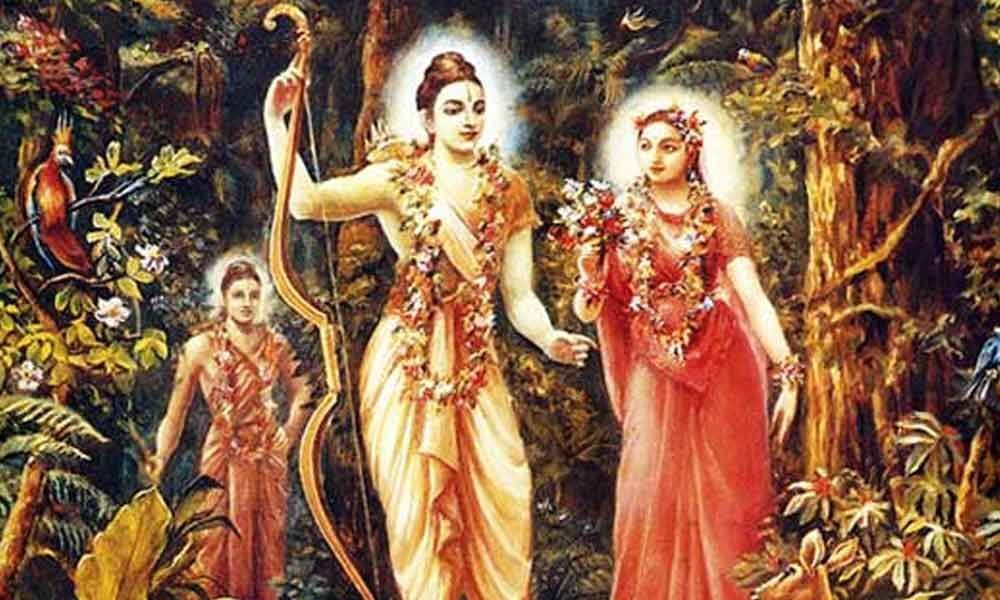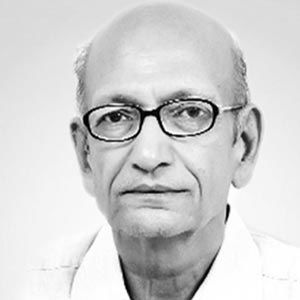Need to focus on Lord Rama's teachings

Five places claim to be locations of the Valmiki Ashrama where Mother Sita stayed after being exiled from Ayodhya.
Five places claim to be locations of the Valmiki Ashrama where Mother Sita stayed after being exiled from Ayodhya. These are Sita Bari in Baran and Sitamata Wildlife Sanctuary in Chittorgarh, both in Rajasthan; Ram Tirath in Amritsar, Mundhri in Kaithal district in Haryana and Sita Samahit Sthal in Prayagraj, Uttar Pradesh.
Faith of the people at all these places asserts equally vehemently that Mother Sita did indeed stay here. Similarly, faith of our people claims that the birthplace of Lord Rama was located in Ayodhya in Uttar Pradesh as well as Ghadam village in Patiala district of Punjab.
The claim of Ayodhya is too well known to be repeated. The people of Ghadam have also been making similar assertions for decades. A publication of Punjabi University, Patiala, titled "Patiala and its Historical Surroundings" published in 1969 says that Patiala "can lay some claim to the two great epic heroes, Shri Ram Chandar Ji and Shri Krishan Ji.
According to tradition, the former was born at a place called "Ghu-Ram" (about 15 miles from Patiala)." A news report published in The Telegraph, Calcutta dated 21.7.1998 says: "Where was Rama born? At Gharram, 15 miles from Patiala… Raja Dasarath's barat came to Gharram.
He married Maharaja's daughter, Mata Kausalya. And Ram was born in his nana's palace." Similar reports have been published in Patiala Bhaskar dated 3.10.2004, Punjab Kesari dated 15.2.2008, and Indian Express dated 25.9.2010.
It may be mentioned that there exists a tradition in India that the daughter-in-law may go to her maternal home to deliver her first child since she feels more comfortable there.
Mother Kausalya may have gone to her maternal home following this tradition. Thus, as far as faith is concerned, the claims of the people of Ghadam are of long standing and cannot be rubbished.
We may take assistance of other evidences in order to decide between these two claimants for the birthplace of Lord Rama. The Valmiki Ramayana, Ayodhya Kanda 55:4, tells of Rama, Lakshmana and Sita stopping at the Ashrama of Maharshi Bharadwaj on their way to Chitrakuta after being exiled from Ayodhya.
At that time, the Maharshi said to them: "You two brothers go to the confluence of Ganga and Yamuna where Ganga has met the Yamuna facing west." This means that the Ganga was flowing facing west when she met the Yamuna.
This implies that Yamuna also flowed facing west because two rivers do not confluence if they are flowing in opposite directions because the combined water has to flow in one direction. The present-day Ganga and Yamuna rivers flow facing east. So where could west-flowing Ganga and Yamuna described in the Valmiki Ramayana be?
Geological evidences indicate that 1,500 years Before the Common Era (BCE), which is generally same as the time of birth of Jesus Christ, the Yamuna River flowed westward from Yamuna Nagar. It began to flow south and then east through Delhi and Agra after this time.
Now, the time of Lord Rama is reckoned anywhere from 12,000 BCE to about 2000 BCE on the basis of different astronomical calculations. Therefore, the Yamuna River at the time of Lord Rama would be the one that flowed before 2000 BCE. This could only be the ancient west-flowing Yamuna described by Sage Valmiki.
It follows that the Ganga too flowed facing west at that time although it is difficult to determine which river is indicated here. A large number of west-flowing rivers such as the Ghaggar, Markanda and Somb met with the west-flowing Yamuna of the old. One of these could be the ancient Ganga.
Next, the Sarayu was a tributary of the Ganga. Hence, she too would be flowing facing west at that time. Therefore, the ancient Ayodhya mentioned in the Valmiki Ramayana would be located on the banks of one of the west-flowing tributaries of the west-flowing Yamuna.
Our attention is attracted by the Ghaggar River which flows from Chandigarh joins the ancient west-flowing Yamuna near Hanumangarh in Rajasthan. Geologist K S Validya has mentioned in the "Report of the Expert Committee to Study the Paleochannels of North India" commissioned by the Ministry of Water Resources in 2016 that "at a place called Ghuram (Panjab), it (Ghaggar) is called as Sarayu."
Ghadam is located on the banks of the Ghaggar. Hence the geographical evidences from the Valmiki Ramayana match with Ghadam being the ancient Ayodhya. To recapitulate the argument: (1) The Ganga met with the Yamuna facing west, (2) thus the Ganga and the Sarayu being her tributaries would also be flowing facing west, (3) the Ghaggar is also known as Sarayu; (4) thus, Ghadam located on the banks of the Ghaggar could be the ancient Ayodhya.
The question of whether Lord Rama was born at his paternal home at Ayodhya or at his maternal grandfather's home at Ghadam cannot be determined by the available evidences. The Valmiki Ramayana is silent on this point.
I have been told by some folklorists that the King of Kosala did not have a male progeny and bequeathed his kingdom to his grandson Rama, but this requires more study. Be that as it may, in either case Lord Rama could have been born at Ghadam.
Faith of local people says this was his maternal grandfather's home and he was born here; and the ancient Ayodhya could be located here in view of the geographical evidences.
Archaeological evidence also seems to support the location of Ayodhya at Ghadam. Professor of Archaeology Manmohan Kumar of M D University Rohtak has written that he has found some sherds of the Harappan Period at Ghadam. The Harappan Period extended from about 3500 BCE to 1500 BCE.
On the other hand, excavations undertaken by the Archaeological Survey of India at Ayodhya have found evidence of habitation beginning 1000 BCE only. Thus, if Lord Rama was born before 2000 BCE, it is more likely to have been at Ghadam.
The question staring in our face is whether we will give primacy to the birthplace of Lord Rama or his teachings. The birthplace is shrouded in debates and mystery as described above. The teachings of Rama are, however, loud and clear. Sage Vasistha had given certain teachings to the young Rama when he had developed a sense of disenchantment with the material world.
The sage had said that the entire universe is pervaded by One Power whom the Sage described as Sat-Chit-Anand-Ghan-Brahman. Swami Shivanand has said that idol worship is only a first stepping-stone to the worship of the One Brahman. The true objective is to worship One Brahman.
We have to choose whether we will entangle ourselves in the idol worship of Lord Rama and fight over his birthplace which is covered with layers of history in any case; or we will focus on his teachings of Sat-Chit-Anand-Ghan-Brahman.
Author was formerly Professor of Economics at IIM Bengaluru

